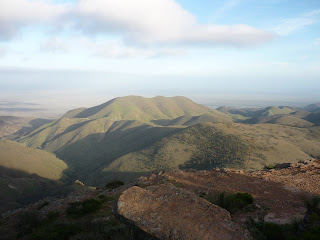


On the way to Wellington, we stopped at the Waitomo glow worm caves to take a walk through. The caves are over 30 million years old, the glow worms are actually larvae, they live for about 10 months by catching insects with strings of mucus they make, which hang down quite prettily, they then hatch into flies which only live for 5weeks. The larvae glow in the dark and make pretty patterns on the wall. We also stopped at Tongariro National Park on the way through to view the snow capped mountains, so beautiful.
Wellington is the captial city of New Zealand, but it is really small, it only takes about an hour to walk from one end to the other, so was really easy to get around. I really liked it, much nicer than Auckland. We visited the Te Papa museum, New Zealands National museum, it was really good, set over 6 floors and telling the history of New Zealand's history, culture, people, land and art. We took a tour of Parliament House, the buildings and the really ugly beehive which is actually the executive wing, so called becuase of the shape. Afterwards we took the cable car at Kelburn, one of New Zealand's oldest and most popular tourist attraction, to the top of the Botanic Gardens, visited the Cable car museum, and then walked back downhill through the gardens,which were really lovely. The following day we hiked up Mount Victoria for 360 degree views of the city, it was a really clear sunny day, so well worth the steep climb. We tramped back down along the winding road with houses tucked away on the steep hillside, what a great (and expensive!) place to live.















